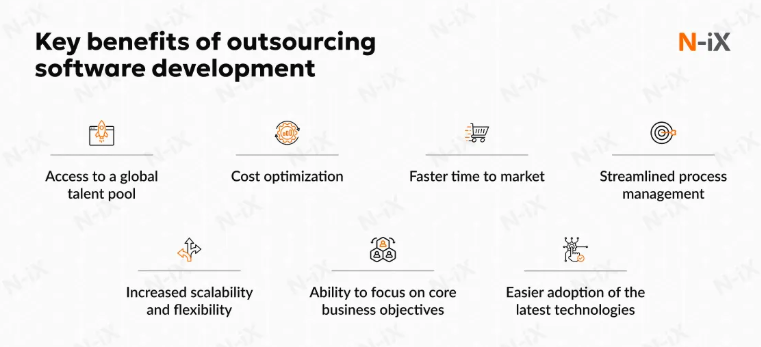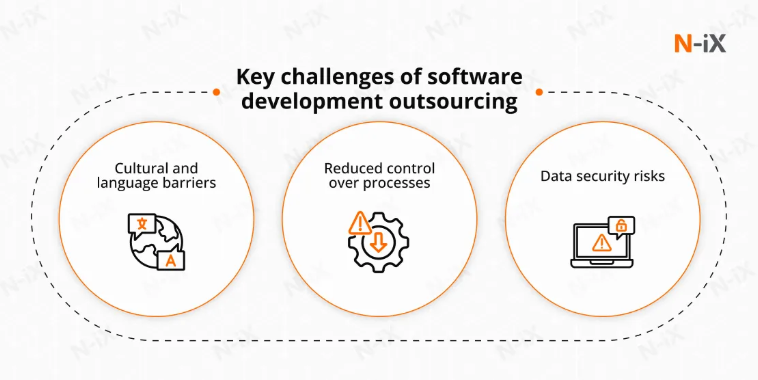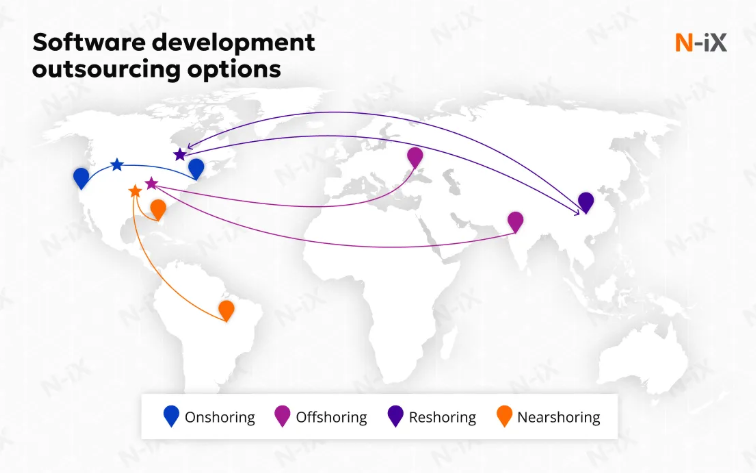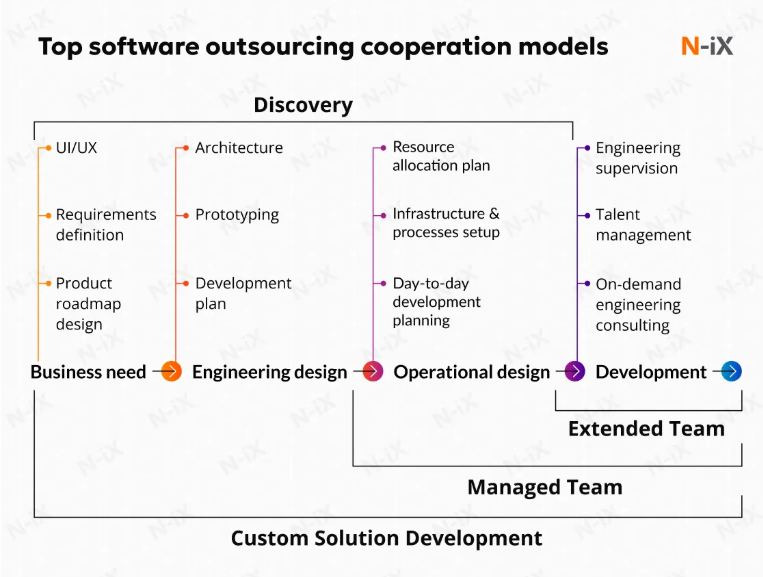
Development Processes and Models: From SDLC to Agile Practices

Software development processes best practices aren't just buzzwords—they are critical frameworks that shape how successful products come to life. As someone making decisions about technology investments or digital transformation, you’ve probably heard about Agile, SDLC, Waterfall, or Rapid Methodology. But what lies beneath these labels is more than just methodology—it's structure, predictability, and value creation.
At SKM Group, we don’t believe in cookie-cutter solutions. We tailor your project’s backbone—the development process—to your goals, constraints, and pace of innovation. That’s why understanding what a software development process is (and isn’t) is the first step toward building the right digital products.
The development process software is the operational engine behind any tech solution. It’s not a tool, but a repeatable series of workflows, decision points, quality checks, and collaboration patterns. It ensures that from the initial idea to deployment, nothing falls through the cracks.
Think of it like constructing a building. You wouldn't start laying bricks without blueprints, soil testing, and permits. Similarly, in software, you can't jump straight to coding without aligning on the problem, architecture, testing approach, and deployment strategy. Every step in the software development procedures safeguards against risk, budget overruns, and misaligned deliverables.
A reliable development process is built on predictable phases. While the naming may vary slightly across models, the backbone stays intact.
Here’s a classic structure:
Each phase feeds into the next with intentionality. Cutting corners here introduces technical debt and user dissatisfaction later. Your role isn’t to know how to do it all—but to know that your partner does.
Future-proof your business with scalable IT services tailored by SKM Group: Check our IT solutions.
If you’re building a software development application that’s expected to last, scale, or serve critical functions, winging it isn’t an option. Structured development processes bring discipline to chaos. They prevent your vision from becoming a victim of miscommunication or poor planning.
These processes promote clarity across stakeholders. Whether it’s your in-house team, outsourced developers, or non-technical executives, a shared understanding of progress points and deliverables matters. It aligns budget expectations, timelines, and most importantly—outcomes. That’s why, at SKM Group, process isn't just a formality. It’s the foundation of success.
Different development life cycle methodologies provide various levels of control, speed, and adaptability. Choosing the right one can make or break your project’s ROI.
For example, a startup racing to MVP will require speed and feedback loops. A government agency launching a compliance-driven system needs documentation, stability, and clear stage gates. The methodology determines team dynamics, sprint length, review frequency, risk approach, and technical choices.
At SKM Group, we guide you in picking (or blending) the model that matches your business context—not just your technical wishlist. We assess timelines, risk thresholds, user involvement, and scope volatility to recommend a path that scales with your ambition.
Let’s be direct—cutting steps in the software development procedures doesn’t save money. It increases risk. Skipping proper QA, user validation, or documentation might seem efficient, but it’s how critical bugs, security flaws, and scope creep slip in.
Following procedures is about minimizing blind spots. It ensures traceability, accountability, and a system of checks and balances. And it empowers your tech investment to deliver not just features, but real, reliable value. Think of it as insurance that your product won’t just work—but will work as planned, at scale, and under pressure.

If you’ve managed or commissioned any digital product, you’ve likely encountered the term SDLC methodologies. The Software Development Life Cycle isn’t one rigid formula—it’s an umbrella term for how software evolves from vision to reality through clearly defined stages.
SDLC exists to bring structure, repeatability, and predictability to software engineering. Especially when multiple teams, compliance rules, or external vendors are involved, SDLC becomes your single source of truth.
SDLC methodologies refer to the different models you can use to plan, execute, and monitor the software life cycle. These can be traditional or modern, sequential or iterative, rigid or adaptive.
Some of the most common ones include:
Choosing the right methodology is about knowing your constraints and business goals. Are you racing to market? Managing high-security protocols? Working with external stakeholders? Each answer influences the methodology that fits best.
Phases of the Software Development Application Process
The software development application process in SDLC is often broken down into several essential stages:
These steps are essential. If even one of them is skipped or under-resourced, the whole system can suffer in quality, stability, or usability.
Development Life Cycle Methodologies Explained
Let’s break this down simply. In traditional SDLC models like Waterfall or V-Model, each phase follows the previous in order. This works well for systems with fixed requirements and long timelines—like ERP systems or government software.
In contrast, iterative SDLC models (Agile, Incremental, Spiral) allow continuous refinement. You don’t need all requirements up front. Instead, you work in cycles, improving with every iteration. This approach is ideal for startups, evolving platforms, and cloud-native tools.
At SKM Group, we often use hybrid models—blending the structure of traditional SDLC with the speed of Agile. This means better risk management and faster ROI.
Best Practices for Managing SDLC in Modern Projects
Modern development demands agility without sacrificing control.
Here’s how we manage SDLC effectively at SKM Group:
SDLC works best when treated as a living process—not a checklist.
How SDLC Provides Structure and Consistency
Why do global brands, healthcare systems, and financial institutions rely on SDLC? Because it brings order to complexity. It provides clear sign-offs, accountability structures, and consistent deliverables.
For you, this means reduced guesswork. You know what to expect, when to expect it, and who is responsible. It builds confidence across departments—from your legal team to your marketing crew. With SDLC, the chaos of building software becomes a transparent, controlled operation.
Waterfall Software Development Process
Before Agile took over boardroom conversations and stand-up meetings, the Waterfall software development process was the go-to model for delivering robust, large-scale systems. While some might view it today as outdated, in reality, Waterfall still plays a critical role in industries that demand predictability, documentation, and clear separation of duties.
At SKM Group, we recognize when the Waterfall model fits—and more importantly, when it doesn’t. It’s not about nostalgia; it’s about strategic fit.
The Waterfall model is a linear and sequential approach to software development. Each phase flows into the next—like water cascading down a staircase. There is no overlap, no iteration between phases, and little room for mid-process changes.
The stages typically look like this:
Each phase must be completed—and often approved—before the next begins. This model thrives in environments where requirements are fixed, the scope is well-understood, and change is minimal or undesirable.
When to Use the Waterfall Software Development Process
There are specific scenarios where Waterfall shines, and as a decision-maker, it’s critical to know when it’s the right choice.
Choose Waterfall when:
If your project fits this profile, Waterfall brings clarity, control, and accountability.
Strengths and Weaknesses of the Waterfall Model
Let’s not sugarcoat it—Waterfall has both strengths and limitations. Understanding both will help you evaluate its fit for your project.
Strengths:
Weaknesses:
That’s why at SKM Group, we sometimes combine Waterfall with Agile or Rapid methodologies in hybrid models. You get the control of Waterfall and the flexibility of iterative delivery.
Many enterprise platforms and legacy systems still rely on Waterfall. Banking systems, embedded software in aerospace, and regulatory health IT solutions often use the Waterfall model because it ensures tight documentation, long-term support structures, and controlled releases.
In these industries, the cost of failure is too high for experimental approaches. Waterfall’s rigidity becomes an asset—it assures every feature is meticulously designed, built, and tested before going live.
How Waterfall Compares to Modern Agile Practices
Compared to Agile development methodologies, Waterfall is slower to adapt but stronger in environments where change is a liability, not an opportunity. Agile promotes frequent iterations, short feedback loops, and co-creation with users. Waterfall requires everything to be defined and locked before development begins.
You might think of Waterfall and Agile as opposing forces—but they don’t have to be. At SKM Group, we often recommend hybrid frameworks, using Waterfall for architectural planning and Agile for feature development. This combination offers governance without sacrificing responsiveness.
Agile changed the way we build software—but more than that, it changed how businesses deliver value. If Waterfall is about certainty, Agile is about adaptability. It recognizes that change is not the enemy—it’s an opportunity.
In a world where speed, innovation, and feedback loops drive success, Agile development practices and methodologies offer you a strategic edge.

Types of Agile Development Methodologies
Agile isn't a single recipe—it’s a mindset with multiple frameworks. Each one emphasizes flexibility, user collaboration, and incremental delivery—but they differ in structure and workflow mechanics.
The main types of Agile development methodologies include:
At SKM Group, we choose the Agile framework that fits your project’s rhythm, culture, and product lifecycle—not just what’s trendy.
Scrum: A Popular Framework for Agile Development
Scrum is the most widely adopted Agile framework—and for good reason. It brings structure to agility without overwhelming teams. Scrum organizes work into fixed-length cycles, called sprints, usually 2–4 weeks. Each sprint starts with a planning session and ends with a demo and retrospective.
Roles are clearly defined:
Scrum works especially well when user feedback is essential and product evolution is continuous. At SKM Group, we often recommend Scrum for MVPs, SaaS platforms, and user-centric applications.
Get dependable, cost-effective IT support without growing your internal team: Discover our outsourcing model.
Kanban is less prescriptive than Scrum. It focuses on managing workflow visibility and limiting work in progress (WIP). Tasks move across a board—typically from “To Do” to “In Progress” to “Done.”
Kanban is ideal for teams that handle:
The beauty of Kanban is its simplicity. There are no sprints, no ceremonies—just clear status and flow. If your team needs flexibility more than structure, Kanban might be your best fit.
XP pushes Agile to its technical limits. It emphasizes coding discipline, automation, and quality through techniques like:
XP is best suited for teams facing high technical complexity or fast iteration cycles. It’s not for every project, but in the right environment, it delivers top-tier code resilience and speed.
Lean is about stripping down to essentials. It focuses on eliminating waste, optimizing resource usage, and delivering only what matters to the end user. In Lean, every feature, every line of code must justify its existence.
This approach benefits product owners by ensuring that development time is spent on true business value—not vanity features or overengineering.
Lean works best when resources are constrained or when you’re launching a product in a competitive, fast-moving market. SKM Group uses Lean principles to prioritize features that move the needle—fast.
Sometimes, speed isn’t a luxury—it’s a survival tactic. When you're launching in a fast-moving market or testing a high-risk idea, the Rapid Methodology can be the ace up your sleeve. It emphasizes accelerated delivery, iterative feedback, and tight user collaboration.
At SKM Group, we use rapid models to help you get working software into users’ hands faster—without sacrificing long-term scalability.
Rapid Methodology refers to an umbrella of strategies focused on reducing development time while maintaining usability. The most well-known among them is Rapid Application Development (RAD), a model introduced in the 1980s but redefined for modern agile environments.

The core of Rapid is simple: build prototypes quickly, test frequently, and involve users at every step. Unlike traditional SDLC models, where full design happens upfront, Rapid relies on evolving designs through user feedback and constant iteration.
Key Features of the Rapid Application Development Model
The Rapid Application Development Model is built around speed and flexibility. Here's what sets it apart:
This model is ideal when requirements are not fully defined or when competitive pressure demands early market entry.
Benefits of Using Rapid Methodology for Software Projects
If you're aiming to launch a product fast or validate a business idea before investing heavily, Rapid can be transformative.
Benefits include:
At SKM Group, we often use Rapid for prototypes, MVPs, proof-of-concepts, and early-stage products.
When to Apply Rapid Development for Success
Rapid development isn’t a one-size-fits-all solution. Use it strategically when:
In these scenarios, the Rapid model minimizes waste and accelerates value delivery.
Challenges and Limitations of Rapid Methodology
Rapid isn’t without its downsides. It assumes high availability from stakeholders, which isn't always feasible. There’s also a risk of overlooking long-term architecture or scalability.
That’s why, at SKM Group, we implement governance mechanisms even in Rapid projects. This ensures that speed doesn’t come at the cost of maintainability or user trust.
When choosing a process, one question always arises: Should we use Agile or SDLC? The answer depends on your product, your industry, and your appetite for change. The truth is, it’s not a war—it’s a spectrum.
Agile is adaptive, iterative, and feedback-driven. SDLC methodologies, especially traditional ones like Waterfall, are structured, sequential, and documentation-heavy.
Agile assumes change is inevitable and welcomes it. SDLC assumes change is costly and should be minimized.
Agile involves users continuously. SDLC often involves them only at the beginning and end. Agile values working software over documentation; SDLC emphasizes documentation to ensure traceability and control.
Agile didn’t replace Waterfall—it evolved from its limitations. In the early 2000s, frustrated by long development cycles and products that missed the mark, developers and managers created the Agile Manifesto.
This marked a shift: from plan-centric to user-centric. From rigid roadmaps to iterative exploration. Agile became the foundation of modern software development processes best practices—and not just in startups, but in large enterprises as well.
Custom software from SKM Group helps you streamline, innovate, and grow—faster: Explore software development.
Benefits of Agile Over SDLC in Modern Software Projects
Agile offers:
In today's environment, where product-market fit can make or break a business, Agile delivers not just software—but agility itself.
When SDLC is Better Suited Than Agile Development
Despite Agile’s popularity, traditional SDLC methodologies still shine in certain areas:
We at SKM Group help you identify where structure is non-negotiable—and where flexibility pays off.
Hybrid Models Combining SDLC and Agile Approaches
Hybrid models take the best of both worlds. We often implement Agile at the execution level (development, testing) while applying SDLC discipline at the planning and architecture levels.
This is especially useful for enterprise-grade systems where governance matters, but agility is expected. Hybrid is not compromise—it’s optimization.
Different problems need different tools. Let’s explore a few other development life cycle methodologies that blend structure, risk control, and flexibility.
Incremental and Iterative Development Models
Incremental development breaks the product into chunks, delivering each as a functional part. Iterative development refines the same solution repeatedly, improving each version based on feedback.
Combined, they offer a balanced approach: fast progress with continuous refinement. This model is ideal when time-to-market is critical but the full solution will evolve over time.
V-Model: Verification and Validation in Development
The V-Model aligns development phases with corresponding test phases. For every design step, there’s a matching test activity. This ensures quality is built in—not inspected after the fact.
The V-Model is widely used in aerospace, automotive, and critical systems where failure isn’t an option.
Spiral Model: Managing Risk in Complex Projects
The Spiral Model combines Waterfall's structure with iterative risk assessment. Each cycle includes planning, risk evaluation, development, and validation.
It’s particularly valuable in large-scale, high-risk projects where uncertainty must be addressed in layers—not all at once.
DevOps Integration in Software Development Processes
DevOps isn’t a methodology—it’s a culture. It integrates development and operations to deliver software faster and more reliably. Automation, CI/CD, monitoring, and cross-functional collaboration are key.
DevOps complements Agile by making deployment a non-event—not a bottleneck.
Scaling Agile with SAFe for Large Enterprises
The Scaled Agile Framework (SAFe) helps large enterprises apply Agile across hundreds of teams. It introduces layers of coordination, planning, and governance without sacrificing speed.
SAFe is your go-to if you're managing multi-team portfolios but still want the agility of startups.
Theoretical models are great—but how do they play out in the wild? Here’s how we apply them at SKM Group to deliver value.
Applications of Agile in Fast-Paced Industries
In industries like fintech, retail, and health tech, Agile is king. Time is money, and iteration is survival. We use Scrum to launch MVPs in weeks, Kanban to handle support queues, and Lean to prioritize only what users need.
Using SDLC Methodologies for Critical Projects
For systems like HRM platforms, compliance tools, and legacy modernization, we apply classic SDLC or hybrid models. These projects need traceability, audit trails, and long-term maintenance plans—not just rapid cycles.
Case Studies of Rapid Methodology in Action
When a client in the logistics space needed a fleet-tracking MVP in under 30 days, we used a Rapid prototyping model. The result? A working, customer-validated solution in 3 weeks—with feedback that shaped the full product launch.
How Development Models Drive Innovation
Choosing the right model fuels creativity. Agile allows fast pivots. Spiral reduces the fear of failure. Lean strips distractions. The model isn’t the goal—but it’s what enables breakthrough execution.
Adapting Processes for Unique Business Needs
No two businesses are alike—and neither are their projects. That’s why at SKM Group, we never impose one method. We co-design your development path based on your vision, not ours.

No model is perfect. Each comes with its own hurdles. Here’s how we tackle them.
Overcoming Resistance to Agile Adoption
Agile requires culture change. Some stakeholders fear loss of control. We educate, guide, and prove through results that Agile doesn’t remove structure—it refines it.
Balancing Flexibility with Structure in Hybrid Models
Hybrids can get messy. We enforce clear boundaries: Agile for build, SDLC for planning. This prevents confusion while maximizing speed and governance.
Managing Scope and Requirements in Complex Projects
Requirements shift—it’s a reality. Through backlog grooming, continuous planning, and stakeholder syncs, we keep expectations aligned.
Ensuring Quality Across Different Methodologies
Process without quality is pointless. We embed QA engineers into every team, automate testing pipelines, and use TDD where possible.
Continuous Improvement in Development Processes
We don’t just deliver software. We improve how we build it—with retrospectives, metrics, and client feedback fueling every iteration.
The future of software development is fast, intelligent, and adaptive. Here’s what’s next.
AI and Machine Learning in SDLC and Agile Practices
AI will optimize project estimations, automate test creation, and even generate code. It’s not replacing developers—it’s amplifying them.
Focus on Sustainability in Development Models
Green coding, low-energy architecture, and carbon-conscious hosting are rising. Expect sustainability to be a factor in process design soon.
Adoption of Cloud-Based Development Frameworks
Cloud-native development streamlines deployment, collaboration, and scalability. Modern processes are moving serverless, containerized, and API-driven.
Hybrid and Adaptive Models for Modern Teams
No more choosing one path. Future models will adapt dynamically—based on team size, product maturity, and market demands.
Enhanced Collaboration with Automation Tools
Collaboration won’t just be human. Automation bots, AI assistants, and integrated toolchains will take over routine coordination, freeing humans to innovate.
There’s no silver bullet in software development. But there is alignment. Align your process with your goals, context, and capabilities—and you’ll set your project up for long-term success.
At SKM Group, we don’t force methodologies. We architect them around your needs, product vision, and delivery horizon. Whether you need speed, governance, scalability—or all three—we have the tools and the mindset to get you there.
Development processes and models define the structure and workflow of software creation. They guide how teams plan, design, code, test, and deliver products. Models like Waterfall, Agile, Spiral, and DevOps provide frameworks for managing complexity and risk. Each model varies in flexibility, documentation needs, and iteration style. The right process ensures consistency, collaboration, and quality at every stage.
The Software Development Life Cycle (SDLC) is the foundation of all software processes. It outlines stages such as planning, analysis, design, implementation, testing, and maintenance. Modern methodologies like Agile and DevOps evolved from SDLC principles but emphasize flexibility and speed. SDLC ensures structure, while Agile adds adaptability. Combining both creates a balanced approach suitable for most projects.
The Spiral Model integrates iterative development with risk analysis at every stage. Each loop—or “spiral”—involves planning, risk assessment, development, and evaluation. This approach is ideal for complex, high-stakes projects where requirements evolve over time. Early risk detection prevents costly rework later. The model’s flexibility allows teams to adjust scope dynamically.
Agile’s success lies in its responsiveness to change and focus on customer value. Traditional models often fail when requirements shift mid-project. Agile’s iterative nature allows continuous adaptation through short development cycles. It also fosters transparency, collaboration, and faster delivery. Businesses adopt Agile to remain competitive in fast-moving digital markets.
DevOps bridges the gap between development and operations teams. It integrates continuous testing, delivery, and monitoring into every phase of SDLC. Automated CI/CD pipelines ensure faster, more reliable deployments. This collaboration reduces friction and improves feedback loops. DevOps extends SDLC principles into real-time operations and optimization.
Selecting the appropriate model improves efficiency, cost control, and quality assurance. It ensures smoother workflows and clearer role distribution. The right model also enhances stakeholder satisfaction through predictable outcomes. It reduces rework and supports scalability as projects grow. Ultimately, it aligns technology execution with business objectives.
Organizations can start by assessing pain points in current workflows. Adopting Agile or DevOps practices gradually ensures smoother transitions. Continuous training, process automation, and retrospectives drive ongoing improvement. Using metrics and KPIs helps track success and guide optimization. Evolving development processes is an ongoing journey, not a one-time change.
Need tailor-made software? We build scalable, secure solutions from scratch.
Discover more
Comments